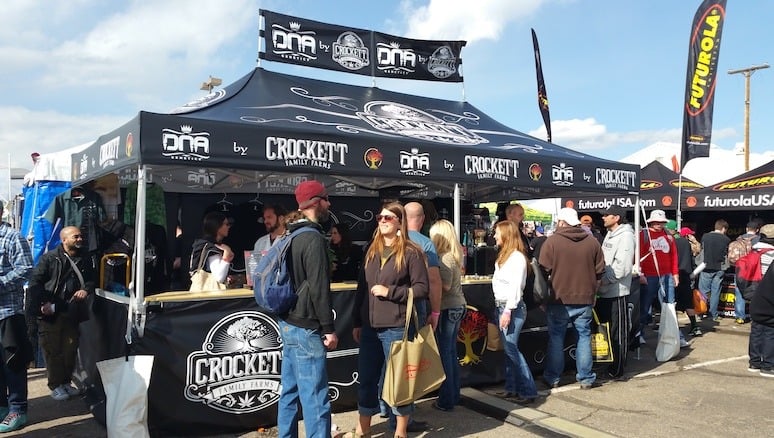
How Canopy Color Impacts the Temperature of Your Custom Tent
When designing your custom canopy tent, it’s important to keep in mind the base color of the canopy and how it impacts the temperature underneath it.
This is especially important for food vendors and farmer’s market businesses who are often set up during the year's hottest days — sometimes cooking hot food!
As a leader in the custom canopy industry, TentCraft can customize a tent in any color. So, which color is going to keep you feeling the most comfortable? Here are the most common questions our customers ask us about how canopy color and temperature are tied together.
Does a Black Canopy Tent Draw Heat?
Yes, a black canopy draws the most heat out of any other color. That’s because black doesn’t reflect any of the sun’s UV rays. Instead, it absorbs the heat. For our friends down in Arizona, New Mexico, and Texas, this can be brutal during the dog days of summer.
Now, this doesn’t mean if you have a 10x10 mightyTENT with a black canopy and no sidewalls, you’re going to be burning up underneath it. It’s going to block you from the sun, which is much more comfortable than standing directly under the sun.
But if you have a more elaborate tent setup with sidewalls and a back wall, it can get pretty hot under a blacked-out pop-up canopy tent.
What Color Canopy is the Coolest?
White is the coolest canopy in color because it’s a great reflector of the sun. So, if you’re concerned about the heat during the summer, design a canopy that’s primarily white but with your logo and any other artwork on the valences.
While anything darker than white — be it a pink or a light blue — is going to be slightly warmer, any light-colored profile will be significantly cooler than a blackout canopy. Bright-colored tents are always cooler than dark-colored tents.
Does the Fabric of a Pop-Up Canopy Affect Temperature?
The material of a pop-up canopy can affect the temperature inside of it — especially when the tent is mostly enclosed.
TentCraft’s canopies use a proprietary Duranti 600D Polyester material, which is water-resistant and lightweight. It doesn’t breathe as well as other natural fibers, so it’s going to do a good job in the winter of keeping your tent warm (especially if you’re using a tent heater!). In the summer, it can trap heat to a certain extent.
Of course, if you have no walls on your custom canopy, you don’t need to worry about the material of the canopy top impacting temperature underneath it.
Customize a Comfortable Canopy Today
Ready to bring your custom canopy to life? The experts at TentCraft can help you design a canopy that’s comfortable and looks great.